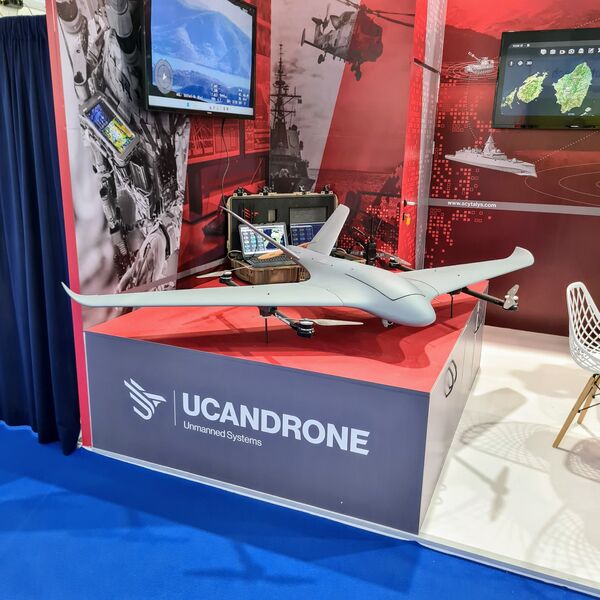
The Ucandrone UAV forms a sensor node within a command-and-control network and is designed to be used for target acquisition and tracking in all domains. (Janes/Christopher Petrov)
The Bulgarian Armed Forces began using a new type of intelligence, surveillance, target acquisition, and reconnaissance (ISTAR) unmanned aerial vehicle (UAV) with its land forces in May. The co-founder of manufacturer Ucandrone, Dimitris Stefanakis, confirmed the development to Janes at the HEMUS 2024 defence exhibition in Plovdiv, Bulgaria, on 7 June.
Bulgaria's land forces confirmed delivery of some of the UAVs on 13 May, releasing a video on 5 June confirming the system, which they call ‘Aquila', had by then been in use for a few days and showing it unpacked with control panels in a field. Stefanakis also confirmed it is in use, adding to Janes that 36 have been ordered, with deliveries continuing.
Based near Athens, Ucandrone's UAV of the same name is a vertical take-off and landing (VTOL) UAV that has four wing-mounted electric motors for VTOL and one larger electric motor at the rear for providing forward thrust during conventional flight. Stefanakis said the internal structure of the drone is made from carbon fibre, with design and manufacturing conducted in-house.
Stefanakis showcased various command-and-control solutions available, from what he said was a drone feed to a smartphone device for use at squad level, up to multimonitor displays for battalion-level planning. In clear conditions, the electro-optical suite integrated into the bottom of the drone's fuselage can see up to 40 km, he said, adding that battery endurance ranges from 90 to 180 minutes, depending on external conditions.
Looking to read the full article?
Gain unlimited access to Janes news and more...







